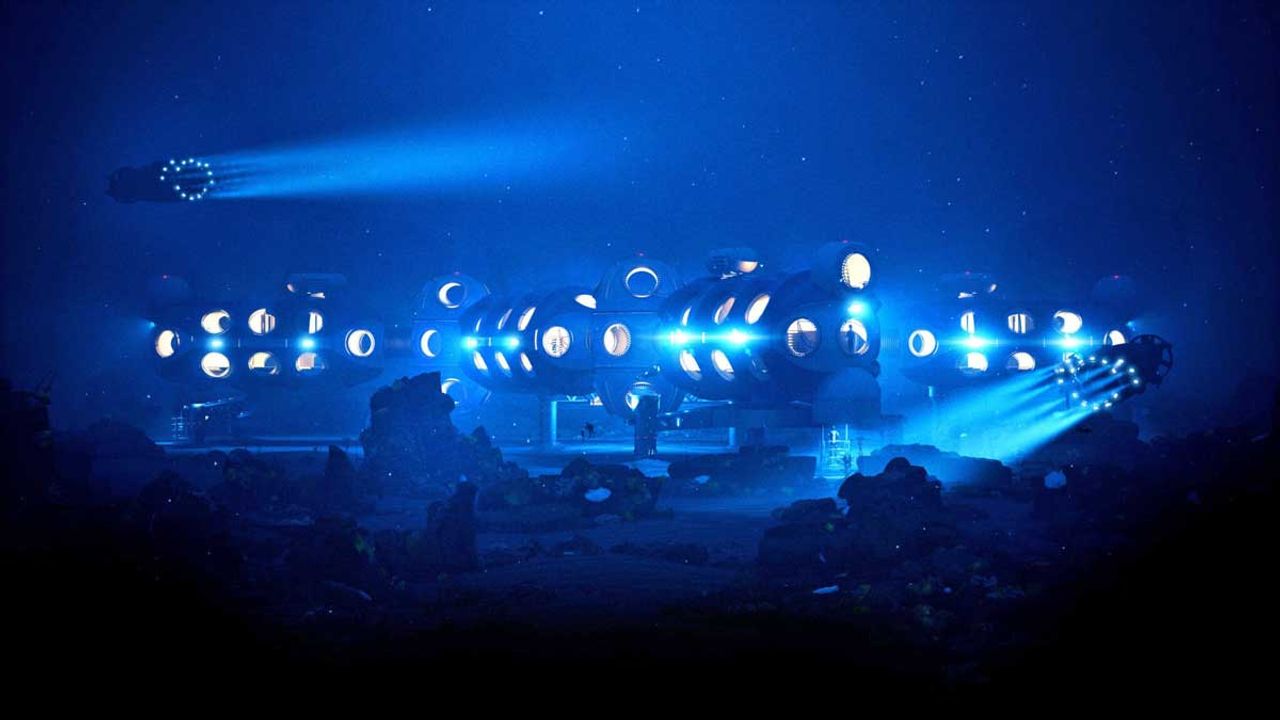DEEP, a UK-based ocean technology company, revealed that it had purchased the site to use as a research hub and company campus. DEEP, which remained in "stealth mode" until September 2023, aims to "make humans aquatic."
The company's key initiative is an underwater habitat system called Sentinel, designed to allow people to live and work at depths of up to 200 meters (656 feet) for periods of up to a month. The Sentinel habitat is made up of interconnected modules that can be adapted for various tasks, such as collecting oceanic data or excavating historical shipwrecks. It can accommodate missions as small as six people or large-scale research stations with 50 occupants.
In 2025
DEEP envisions these habitats playing a similar role in the ocean as the International Space Station (ISS) does in space, creating a permanent human presence underwater. The first step toward this goal is the development of a smaller precursor habitat called Vanguard, which will serve as a testing ground for the technology needed for Sentinel. Vanguard is a 12-meter (40-foot) by 7.5-meter (25-foot) structure that can support three people for underwater missions lasting up to a week. It is expected to be operational at DEEP's UK campus in early 2025.
DEEP’s Vanguard could be used in scenarios that require quick deployment, such as underwater search missions. For instance, during a search for survivors of a superyacht that sank off Sicily in August 2023, divers could only remain submerged for about 12 minutes at a time. In such cases, an underwater habitat like Vanguard could serve as a base, allowing longer missions near the wreck.
Today, there is only one operational underwater research lab globally, run by Florida International University. If everything proceeds as planned, DEEP hopes to have its Sentinel habitats ready by 2027, with deployments in various locations worldwide. However, DEEP acknowledges that the challenges ahead are significant.

The Sentinel habitat will be constructed using 3D printing technology by robots, using a high-strength, nickel-based alloy known as Inconel. Depending on its operational depth, the habitat can be accessed via submarine or through a moon pool at the bottom, allowing divers to enter and exit. The system will be powered by renewable energy sources such as solar panels and wind turbines on the surface, and it will remain connected to the outside world via a Starlink interface.
DEEP’s habitats could have a range of uses beyond research, including monitoring and repairing subsea infrastructure, coral restoration, naval dive training, and medical research. They could also support tourism and space training. The habitats are designed to be portable, allowing them to be moved to new locations once a mission is complete.
Expenses Are Still High
While there are risks and costs associated with underwater habitats, DEEP believes that its innovative technology and approach will overcome these obstacles. Bill Dennison, a professor of marine science who once worked in an undersea lab, highlighted that living and working underwater offers insights not possible with shorter dives. Still, he noted the complexity and expense involved.
DEEP’s financial backing comes from a private North American tech entrepreneur. The company aims to not only advance ocean research but also inspire the next generation. It is working on STEM outreach programs and developing a curriculum to train future habitat occupants.
DEEP is entering a growing field of ocean exploration, with other initiatives such as OceanX and Proteus also seeking to raise public awareness and excitement about the oceans. DEEP's focus on sustainability and education is part of its broader goal to reconnect humanity with the sea and foster long-term interest in the ocean's potential.







